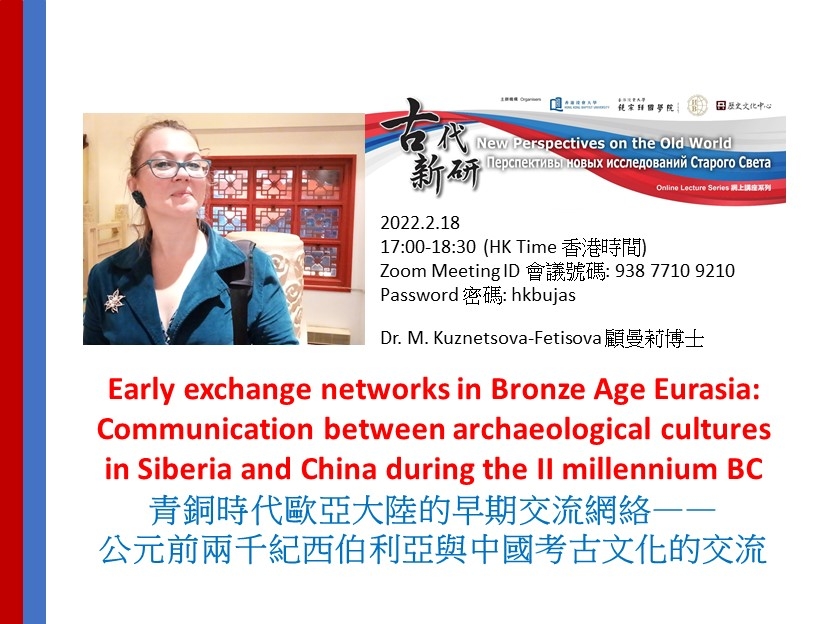Past Events
Early exchange networks in Bronze Age Eurasia: Communication between archaeological cultures in Siberia and China during the II millennium BC (2022/2/18)




The HKBU Jao Tsung-I Academy of Sinology is honoured to form a partnership with the Institute of Oriental Studies (IOS), Russian Academy of Sciences and devise a five-year plan together, to forge a stronger bond between the two institutions, and by extension the two sinological communities, in terms of teaching and research while developing exchange and cooperation opportunities in these areas.
From October this year to June 2021, JAS and IOS, together with the Research Centre for History and Culture (Beijing Normal University - Beijing Normal University-Hong Kong Baptist University United International College), will co-organize an online monthly seminar series titled “New Perspectives on the Old World.” Speakers from world-leading institutes will take turn as keynote speakers and give online lectures. Through this initiative, we will leverage the competitive advantages of the three distinct sinological communities and engage in a series of high-end, cutting-edge discussions in key academic issues in Sinology. Welcome to the first lecture series under the partnership agreement between JAS and IOS!
No registration is required for this lecture series. All are welcome to attend online:
https://hkbu.zoom.us/j/93877109210?pwd=Qk43amd2SGZEZHREdG0yejZiUUUvUT09
Zoom Meeting ID: 938 7710 9210
Password: hkbujas
HKBU students: For CCL attendance, please register via SLES beforehand, and log in Zoom with HKBU email account.
Fifth Lecture: Early exchange networks in Bronze Age Eurasia: Communication between archaeological cultures in Siberia and China during the II millennium BC
Date: 18 February 2022, Friday
Time: 5:00-6:30pm (Hong Kong time)
Speaker: Dr. M. Kuznetsova-Fetisova (Junior Researcher, Department of Ancient Orient, Institute of Oriental Studies, Russian Academy of Sciences)
Language: English
Abstract: The II millennium BC marked a transition between the Neolithic and the Chalcolithic periods in East Asia. At the end of this millennium there appeared a civilization with sophisticated social and political structures, a highly developed writing system, and large-scale organized crafts, including bronze metallurgy. This remarkable progress was possible thanks to a mutual influence with other cultures. In my presentation I would like to discuss about these early exchanges and possible communication between North Asia and East Asia with particular focus on a few cultures: the Afanasievo culture (IV—III millennium BC), the Okunev culture (II millennium BC), the Seima-Turbino phenomenon (ca. 2300-1700 BC), the Sintashta-Petrovka culture (2050–1750 BCE) and the Karasuk culture (1500–800 BC).